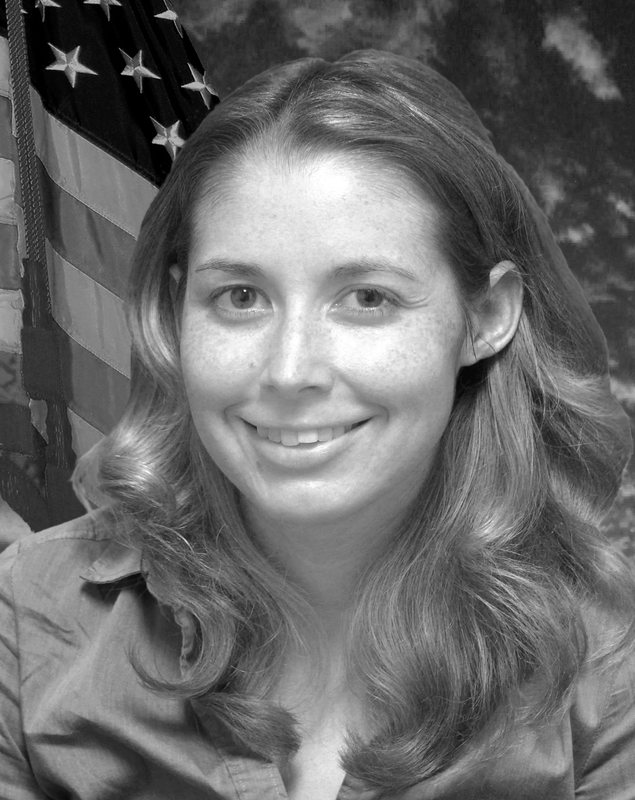Stephanie Hoffman, MS, CCSISpecialties
Crime Scene Investigations Forensic Photography TFT Courses Taught Meeting the “CSI Effect” Head On: Crime Scene Diagrams, 360 Degree Panoramas, and Virtual Tours Webinar |
About Stephanie Hoffman
Stephanie L. Hoffman, MS, CCSI is an International Association for Identification (IAI) Board Certified Crime Scene Investigator and Forensic Photography and Electronic Imaging Science and Practice Subcommittee Member who received her M.S. and B.S. in Forensic Sciences with Minors in Chemistry, Criminology, and Criminal Justice from Chaminade University of Honolulu.
She has held multiple forensic science positions and garnered a wealth of professional experiences and accolades at the following agencies: Arizona State University (Faculty Associate, Criminology and Criminal Justice from 2018-Present), Lake Havasu City Police Department (Crime Scene Specialist from 2015-Present), Marian University (Department Chair, Assistant Professor of Forensic Sciences from 2011-2015), Chaminade University of Honolulu/Honolulu Medical Examiner’s Office (Forensic Sciences Guest Lecturer and Graduate Researcher from 2006-2010), Joint Prisoners of War/Missing in Action Accounting Command (JPAC) (Forensic Photographer in 2010), Forensic Services (Forensic Photographer in 2010), and the Los Angeles Regional Crime Lab/Los Angeles County Coroner’s Office (Field Unit Intern in 2008).
In addition, she has presented her graduate research entitled, “Imaging the Unseen with Digital Ultraviolet (UV), Visible (VIS), and Infrared (IR) Technology: Preliminary Bruising and Tattoo Studies,” at multiple professional conferences and was even nominated for the “Emerging Forensic Scientist Award” at the American Academy of Forensic Sciences Annual Educational Conference in 2011 for said research. Through her research, she has proven that it is possible to image bruising that has not appeared or has disappeared from human sight, as well as tattoos that have been altered or damaged due to injury and/or decomposition with said technology.
To date she has also developed and/or taught multiple sections of 23 different forensic science courses and four criminology and criminal justice courses at the collegiate level and advised 8 student research projects, four of which have been recognized and/or awarded for outstanding research efforts by the IAI. She has presented over 65 forensic lectures and/or workshops to both professional and lay communities and was also designated by the Arizona Peace Officer Standards and Training Board as a Specialist Instructor in 2016 for: Preliminary Investigation and Crime Scene Management, Physical Evidence Procedures, Fingerprinting, and Death Investigations.
Stephanie L. Hoffman, MS, CCSI is an International Association for Identification (IAI) Board Certified Crime Scene Investigator and Forensic Photography and Electronic Imaging Science and Practice Subcommittee Member who received her M.S. and B.S. in Forensic Sciences with Minors in Chemistry, Criminology, and Criminal Justice from Chaminade University of Honolulu.
She has held multiple forensic science positions and garnered a wealth of professional experiences and accolades at the following agencies: Arizona State University (Faculty Associate, Criminology and Criminal Justice from 2018-Present), Lake Havasu City Police Department (Crime Scene Specialist from 2015-Present), Marian University (Department Chair, Assistant Professor of Forensic Sciences from 2011-2015), Chaminade University of Honolulu/Honolulu Medical Examiner’s Office (Forensic Sciences Guest Lecturer and Graduate Researcher from 2006-2010), Joint Prisoners of War/Missing in Action Accounting Command (JPAC) (Forensic Photographer in 2010), Forensic Services (Forensic Photographer in 2010), and the Los Angeles Regional Crime Lab/Los Angeles County Coroner’s Office (Field Unit Intern in 2008).
In addition, she has presented her graduate research entitled, “Imaging the Unseen with Digital Ultraviolet (UV), Visible (VIS), and Infrared (IR) Technology: Preliminary Bruising and Tattoo Studies,” at multiple professional conferences and was even nominated for the “Emerging Forensic Scientist Award” at the American Academy of Forensic Sciences Annual Educational Conference in 2011 for said research. Through her research, she has proven that it is possible to image bruising that has not appeared or has disappeared from human sight, as well as tattoos that have been altered or damaged due to injury and/or decomposition with said technology.
To date she has also developed and/or taught multiple sections of 23 different forensic science courses and four criminology and criminal justice courses at the collegiate level and advised 8 student research projects, four of which have been recognized and/or awarded for outstanding research efforts by the IAI. She has presented over 65 forensic lectures and/or workshops to both professional and lay communities and was also designated by the Arizona Peace Officer Standards and Training Board as a Specialist Instructor in 2016 for: Preliminary Investigation and Crime Scene Management, Physical Evidence Procedures, Fingerprinting, and Death Investigations.

